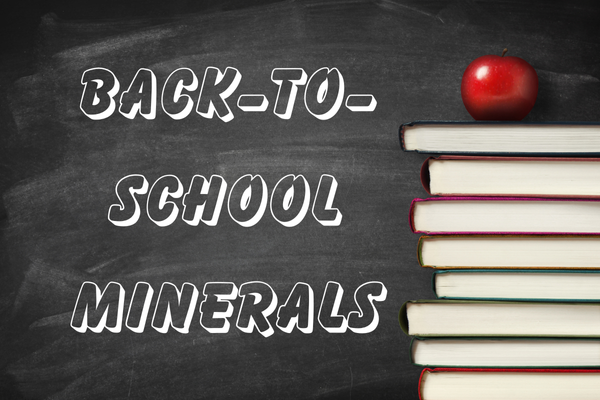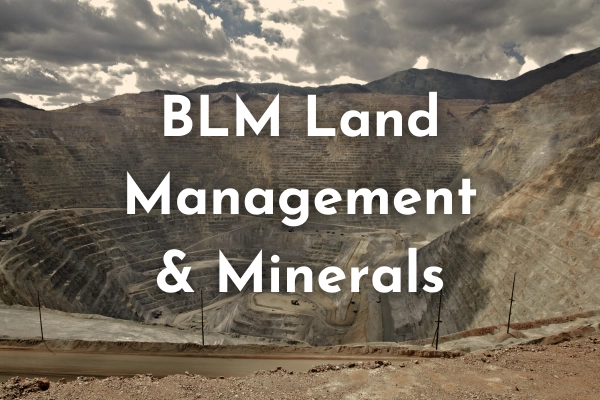September 3, 2025
September 3, 2025

When you pack a backpack for the first day of school, you’re not just carrying notebooks, pencils, and supplies—you’re carrying minerals. From the graphite in pencils to the titanium dioxide in paints and the steel in playground swings, minerals make the back-to-school season possible. They show up in every classroom, playground, and cafeteria.
The classic pencil is powered by graphite, a soft form of carbon that makes smooth marks on paper. Erasers often include pumice and sulfur mixed into the rubber.
Paper depends on kaolin clay and calcium carbonate for brightness and a smooth finish, while glue often contains limestone and talc as fillers. Even scissors need minerals: their stainless steel blades come from iron ore mixed with chromium to prevent rust.
In art class, minerals bring color to life. Titanium dioxide gives paints and crayons a bright white base, iron oxides create reds and yellows, and ultramarine supplies vibrant blues. Without minerals, the creativity in school projects would look much different.
Laptops, tablets, and smartboards depend heavily on minerals. Silicon, refined from quartz, is the backbone of microchips. Screens use indium-tin oxide to stay both transparent and conductive. Rechargeable batteries rely on lithium, cobalt, and nickel, while copper wiring and rare earth elements keep classrooms connected to Wi-Fi and the internet.
Without these minerals, digital learning tools simply wouldn’t exist.
Recess wouldn’t be the same without minerals. Playground equipment uses steel (from iron ore), aluminum, and protective zinc coatings to stay safe and sturdy. The soft mats beneath swings and slides are reinforced with kaolin clay and calcium carbonate.
Inside, lockers are made from sheet metal, desks and chairs from aluminum and titanium alloys, and chalkboards from slate or mineral-coated surfaces.
The very walls and floors are mineral-rich: gypsum in drywall, limestone and clay in cement, silica in windows, and copper in wiring. Without these raw materials, schools themselves couldn’t be built.
Minerals aren’t just in supplies and buildings—they’re also on the lunch menu. Table salt, or sodium chloride, is a direct mineral we eat every day. Fortified foods and milk often contain iron, calcium, and magnesium, all of which help kids grow stronger and healthier.
Just as minerals build schools and supplies, they also fuel young minds and bodies.
From pencils and laptops to playgrounds and cafeterias, minerals are at the core of every school experience. They aren’t just in the background—they’re essential to learning, creativity, and play. This back-to-school season, remember that minerals truly make education possible.
Minerals Make It Happen!

December 3, 2025

November 10, 2025